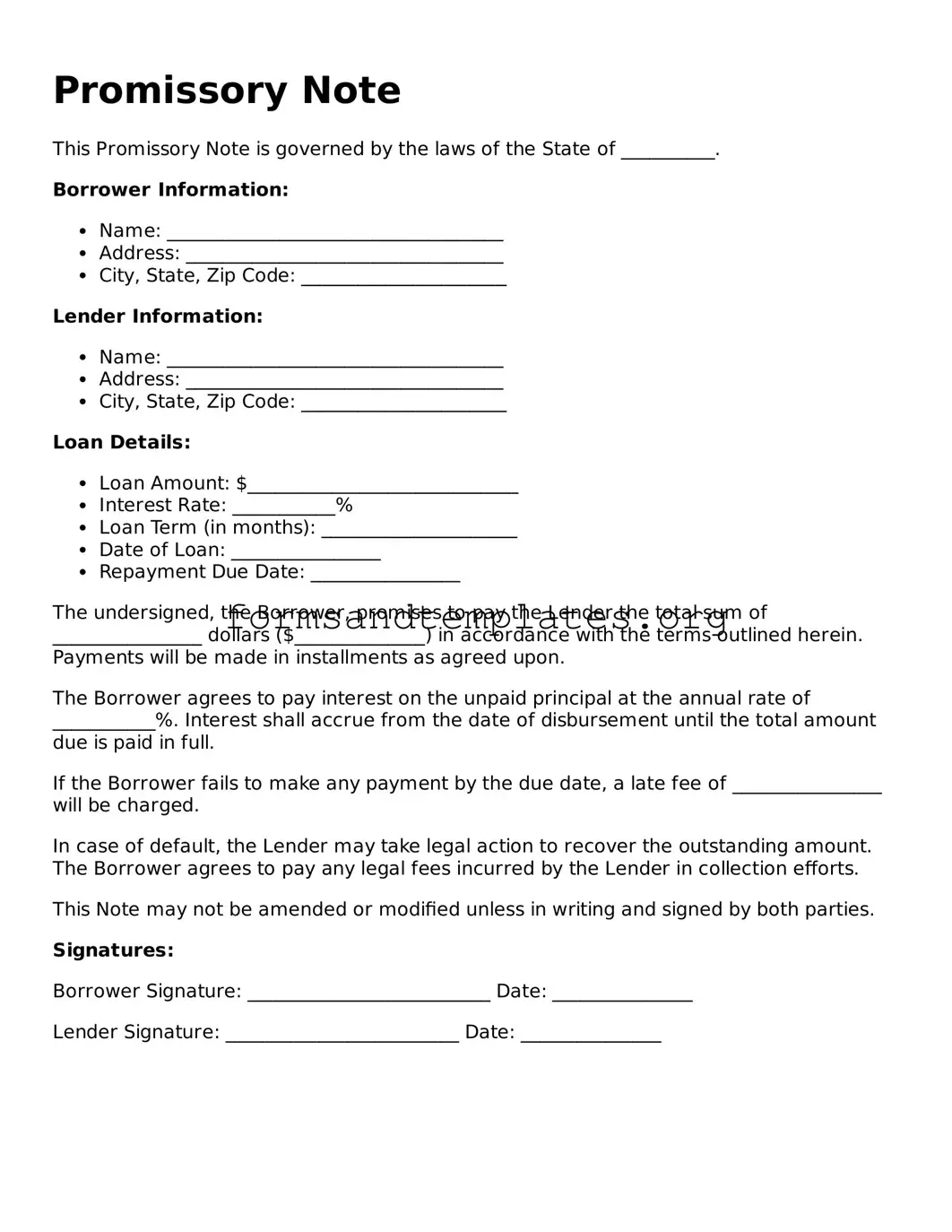Promissory Note
This Promissory Note is governed by the laws of the State of __________.
Borrower Information:
- Name: ____________________________________
- Address: __________________________________
- City, State, Zip Code: ______________________
Lender Information:
- Name: ____________________________________
- Address: __________________________________
- City, State, Zip Code: ______________________
Loan Details:
- Loan Amount: $_____________________________
- Interest Rate: ___________%
- Loan Term (in months): _____________________
- Date of Loan: ________________
- Repayment Due Date: ________________
The undersigned, the Borrower, promises to pay the Lender the total sum of ________________ dollars ($______________) in accordance with the terms outlined herein. Payments will be made in installments as agreed upon.
The Borrower agrees to pay interest on the unpaid principal at the annual rate of ___________%. Interest shall accrue from the date of disbursement until the total amount due is paid in full.
If the Borrower fails to make any payment by the due date, a late fee of ________________ will be charged.
In case of default, the Lender may take legal action to recover the outstanding amount. The Borrower agrees to pay any legal fees incurred by the Lender in collection efforts.
This Note may not be amended or modified unless in writing and signed by both parties.
Signatures:
Borrower Signature: __________________________ Date: _______________
Lender Signature: _________________________ Date: _______________
